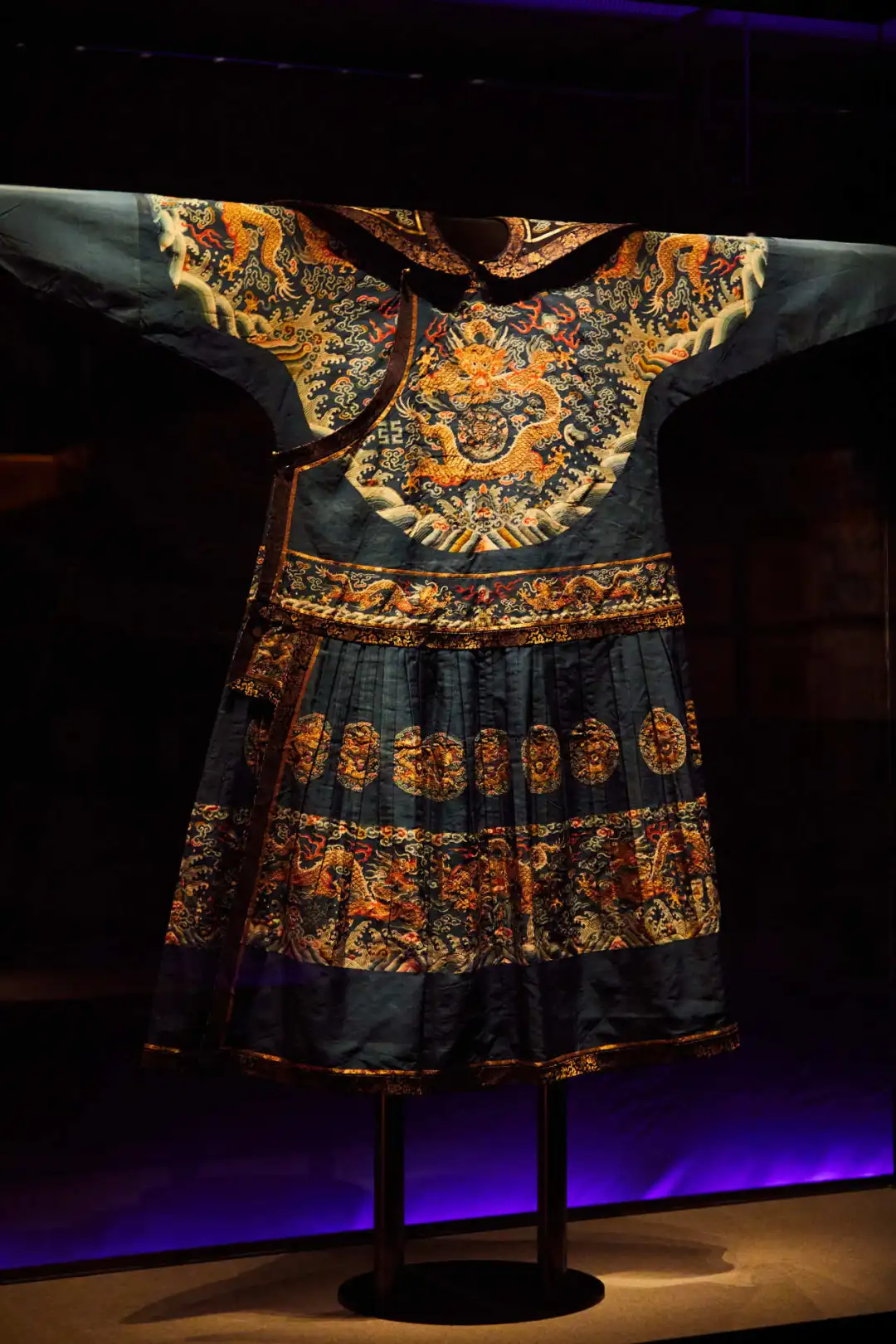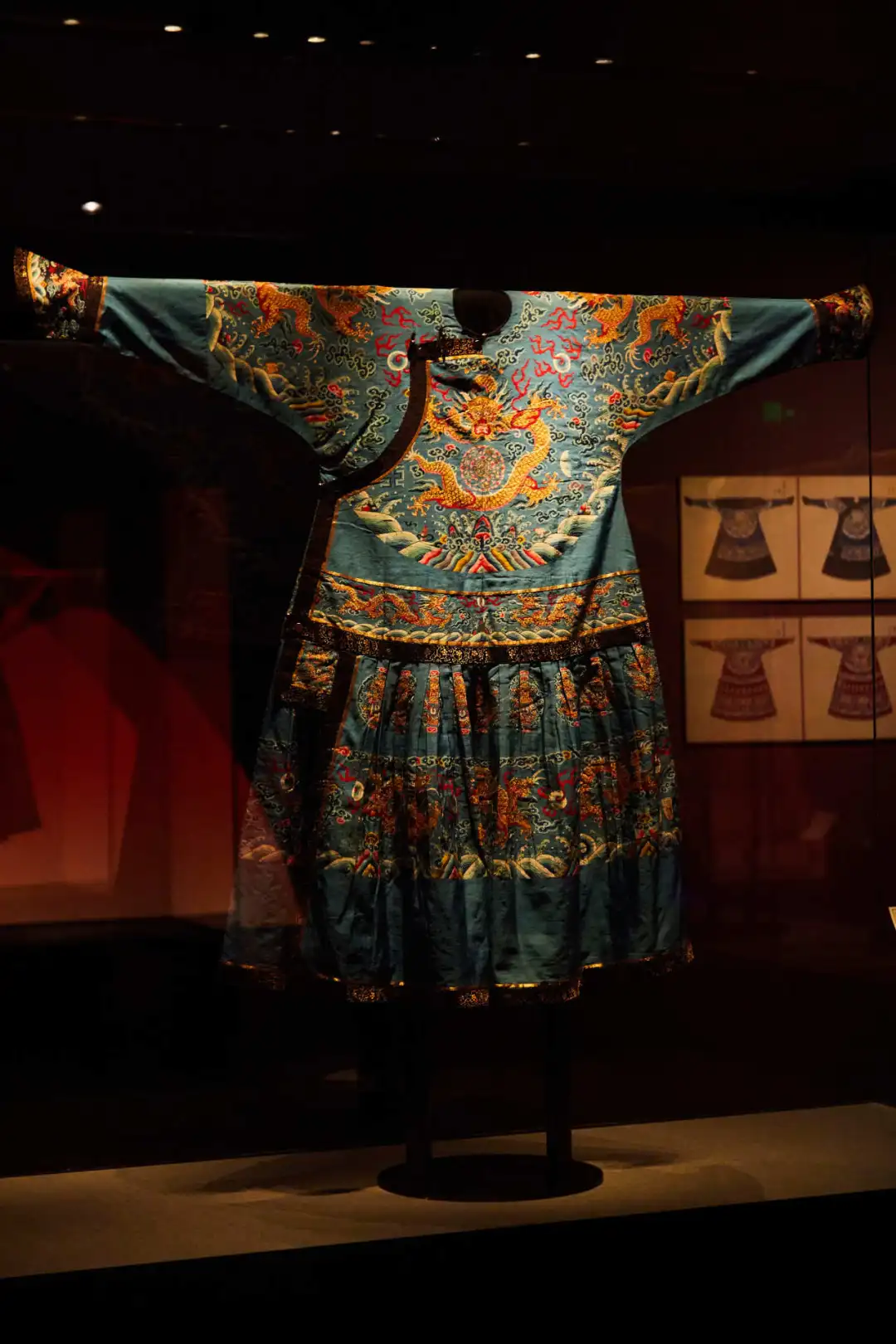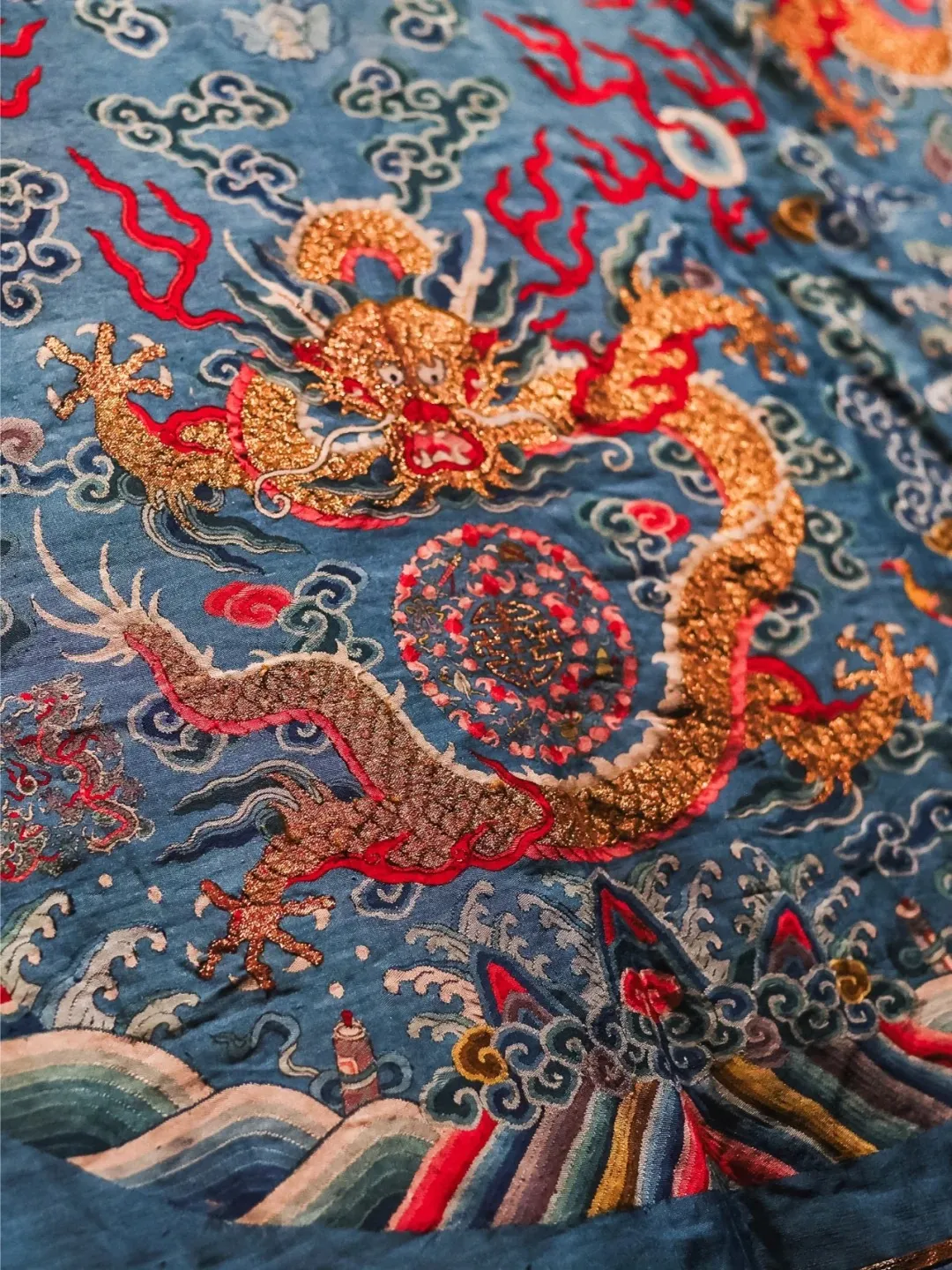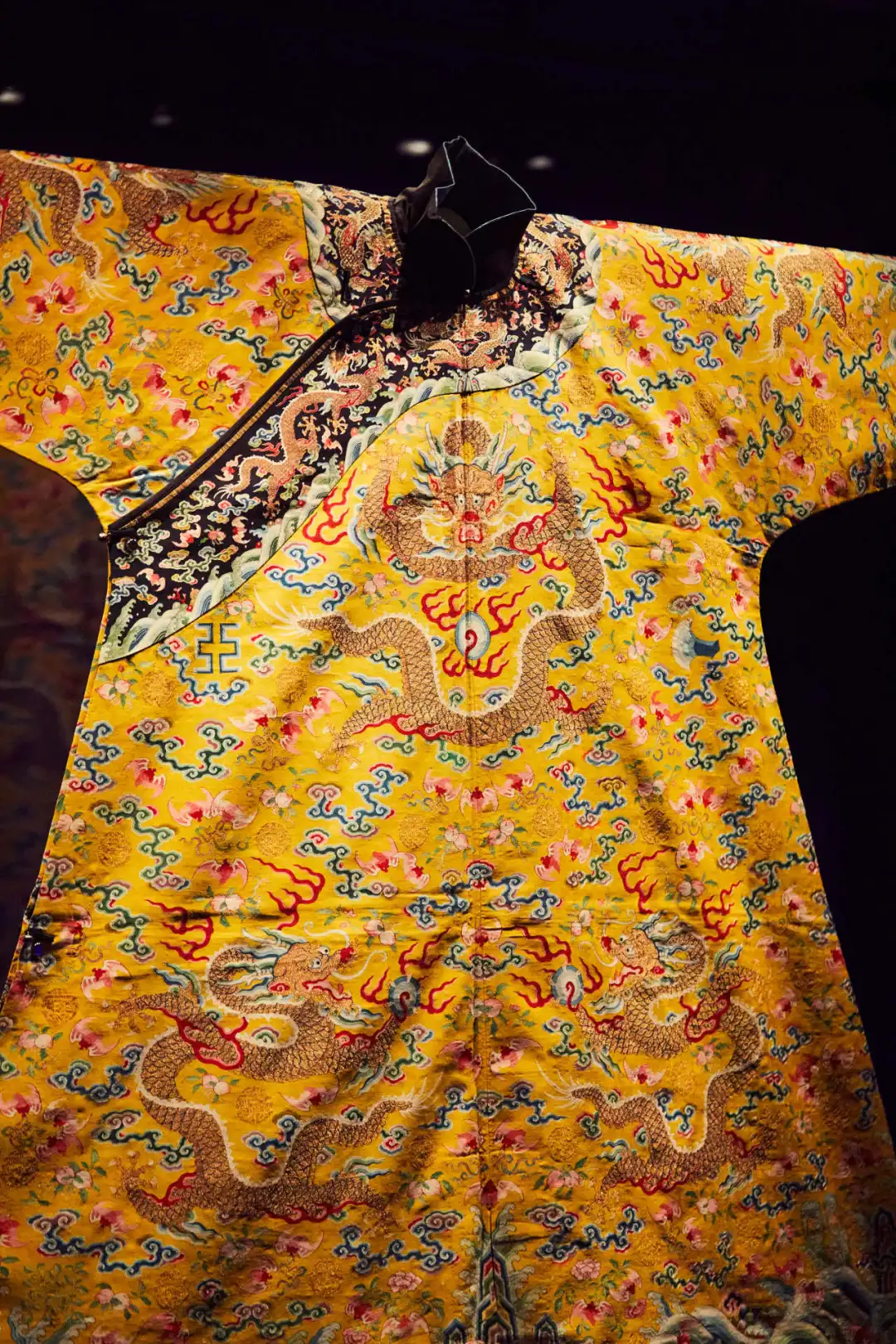This is a rather special share today. Recently, at the Guardian Art Center in Beijing, there was an exceptionally rare and once - in - a - decade exhibition of traditional Chinese attire—the Qing Dynasty Court Embroidery Exhibition. The exhibition traces the timeline from the early to the late Qing Dynasty, focusing primarily on the royal attire of the Qing court. Through the passage of a thousand years and the morning mist of history, we witness the unparalleled heights achieved in fabric, color, patterns, craftsmanship, and aesthetic levels of royal garments. At the same time, we can admire the brilliance and splendor of the ancient silk industry and traditional plant dyeing techniques throughout the Qing Dynasty.
The Qing rulers placed great emphasis on using colors and patterns to establish the order and rituals of the dynasty. Thus, different colors carry distinct cultural connotations, and various printing techniques conceal philosophical and ritualistic meanings unknown to us. Today, let us follow my footsteps to appreciate the beauty of Qing Dynasty attire colors.
Sacrifices were the most significant duty of the ancient emperors—a religious ceremony to express reverence and gratitude to the heavens and earth, embodying the ancients' worship and respect for natural forces. These rituals were not only expressions of religious faith but also crucial components of national political life. During the Qing Dynasty, the emperor would conduct sacrifices at the four suburban altars—Tiantan (Heaven), Ditan (Earth), Ritan (Sun), and Yuetan (Moon)—in each season. On these occasions, the colors worn by the emperor were meticulously chosen, as detailed in the Yongzheng Dynasty's ceremonial records. Thus, sacrificial robes represent the most exquisite and solemn examples of court attire.
Among the exhibits is a blue kesi dragon - patterned male court robe worn by the Jiaqing Emperor during the winter solstice sacrifice at the southern suburban Tiantan. Woven with two - toned gold threads for the dragon patterns and multicolored silk threads for auspicious clouds, eight treasures, and water motifs, the robe features the Twelve Symbols. The color blue, with its wide spectrum from deep blue to green, was known as 'qing.' By the Ming Dynasty, 'qing' leaned closer to deep blue, while in the Qing Dynasty, it embodied a more profound, elegant, and resolute character.
Another exhibit is a bright yellow kesi dragon - patterned male court robe worn by the Qianlong Emperor during the summer solstice sacrifice at the northern suburban Ditan. The robe, embroidered with gold - threaded dragon patterns and multicolored silk clouds and water motifs, also features the Twelve Symbols. Yellow, representing 'earth' in the Five Elements, symbolized the central deity of the loess plateau and the agricultural civilization's foundation, embodying paternalistic cultural values.
A bright red kesi dragon - patterned male court robe worn by the Tongzhi Emperor during the spring equinox sacrifice at the Ritan is another highlight. Woven with green auspicious clouds, dragon patterns, and water motifs, it also features the Twelve Symbols. Lastly, a moon - white kesi dragon - patterned male court robe worn by the Jiaqing Emperor during the autumn equinox sacrifice at the Yuetan showcases the'moon - white' color, a prevalent and significant hue in Qing attire. This pale blue, referred to as'moonlight white' or 'jade color,' carried a hint of indigo, symbolizing the moon's serene glow.
Kesi, often called 'carved silk,' is a traditional Chinese silk craft renowned for its ornamental and decorative qualities. Unlike machine - assisted techniques used in Song brocade and Yun brocade, kesi is entirely handmade, earning it the title of 'the holy grail of silk'—a'soft gold' in handicrafts. Kesi uses raw silk as warp because it's easy to fix and not easy to break, and colored cooked silk as weft. It's woven on a special plain - weave wooden loom with the method of continuous warp and discontinuous weft. This method creates a unique texture similar to knife - carved patterns and gives the fabric a double - sided three - dimensional effect.
The Twelve Symbols, or 'Twelve Ornaments,' were imperial attire markers representing supreme imperial virtues and the emperor's dominion over the earth. These symbols—sun, moon, dragon, stars, mountain, pheasant, fire, sacrificial cups, algae, grains, axe, and 'fu' patterns—each carried specific meanings and were meticulously placed on the dragon robes. For example, the sun, moon, and stars on the robe symbolize the emperor's ability to illuminate all directions, just like the celestial bodies shining on the people.
The'sea and mountain' pattern, commonly seen in traditional attire and Qing court dramas, symbolized enduring power and prosperity. It consists of'sea water pattern' and'mountain cliff pattern.' In the early days, it was a landscape - depicting pattern, but in the Ming and Qing Dynasties, it evolved into a symbol of feudal power. In this exhibition, most exhibits, especially the emperor's dragon robes, have this pattern. As time passed from the Shunzhi to the Guangxu era, the pattern's evolution reflected the dynasty's declining fortunes, with later designs losing the intricate beauty of earlier periods.
Due to space constraints, this feature on Qing court colors concludes here. However, the exhibition's brilliance extends far beyond the cultural codes and craftsmanship of dragon robes. Next time, let us explore the 'Chinese colors' hidden within the Qing court, unveiling the wonders of traditional Chinese color palettes—a testament to timeless aesthetic mastery. These colors are not only a visual feast but also a window into the rich history and culture of the Qing Dynasty.




